Florida's Pass Protection Has Been Better Than You Think

Anyone will tell you that the Florida Gators' offensive kryptonite this year has been their offensive line.
It's a totally fair observation, and basic stats back it up. Florida is running the ball at 4.1 yards per carry, compared to last's year's 5.3 with the same lead running back Lamical Perine in house. Florida also has allowed 18 sacks, which is good for fourth-most in the SEC. Their 9.6 offensive line QB pressures allowed per game ranks 13th out of 14 SEC teams, as well (per Pro Football Focus).
However, stats don't always tell the full story. How do quarterbacks handle the pressure? Do they stand tall and make clutch throws against it? Do they escape a quickly collapsing pocket to make throws on the run, perhaps tucking the ball and scrambling themselves?
Florida quarterback Kyle Trask has, rather, struggled under pressure a good bit. Compared to a 72.4% completion rate from a clean pocket, Trask is only completing 51.7% of his 58 throws under pressure, on 77 dropbacks.
And quite frankly, Trask has had plenty of time to get out of the initial pressures that he has faced, whether it be via throw or giving the ball on run-pass options. Yet, he's taking sacks and unnecessary pressures a good chunk of the time.
There's no average time-to-throw stat in college football - it simply isn't tracked compared to the NFL. In the NFL, however, 38 qualifying quarterbacks are getting the ball out of their hand 2.66 seconds after the ball is snapped.
And Duke head coach David Cutcliffe, who groomed Peyton and Eli Manning - as well as Daniel Jones - as college quarterbacks into becoming Top 10 selections in the NFL Draft, believes that quarterbacks should prepare to have the ball out in 2.8 seconds on every play, or else they will be sacked.
Therefore, I tracked how much time Trask has had to throw on plays that he has been sacked throughout the 2019 season in order to better understand how the offensive line is protecting him. Between the snap and first contact that leads to a sack - for example, a mere hand swipe in passing Trask that doesn't affect the play does not count - Trask averaged 3.2 seconds to throw the ball.
That's over half a second - 0.54 - more than the average qualifying NFL quarterback, and nearly half a second - 0.4 - more than what Cutcliffe suggests. Perhaps only enough time for the average human to snap their fingers, but for a quarterback, an extra half a second is glorious given their average window.
Now, when it comes to each individual sack, blame can go on both the offensive line and Trask. Below are six examples from throughout the year.
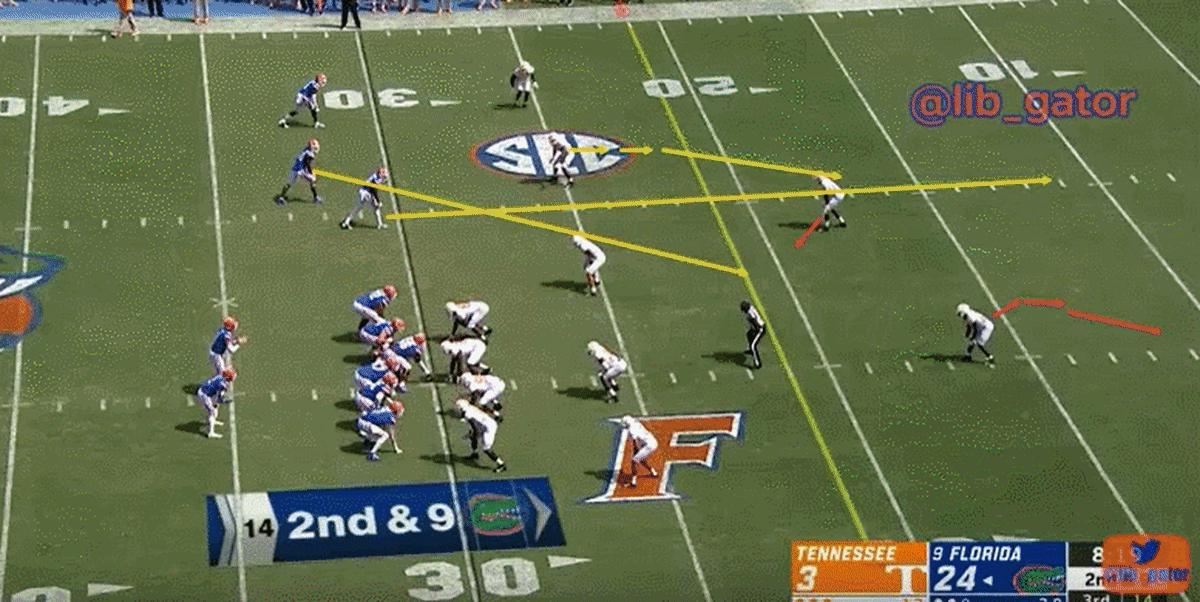
This is the second sack that Trask had taken all season, on 2nd and nine with 8:19 left in the third quarter. Trask goes down in 4.24 seconds against a five-man blitz, against a Cover 1 Robber defensive look.
The seam opens up as the slot receiver splits the strong safety and nickel corner, while the free safety flips his hips back towards the right hash to prevent the slant - there's no one deep to prevent Trask from throwing this. Trask actually stares down the seam, but fails to pull the trigger and takes a largely unnecessary sack that should have been a touchdown.
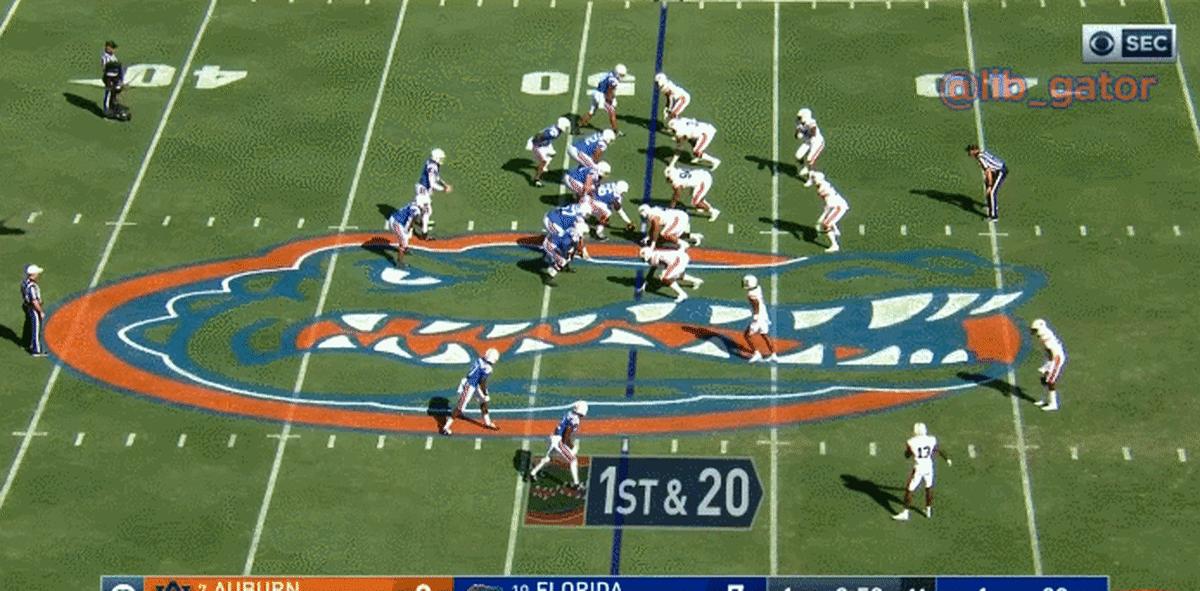
With 8:59 left in the first quarter against Auburn, the Tigers send a nickel cornerback on a blitz on the backside of the RPO - Trask goes down in only 2.29 seconds.
I'm not sure anyone deserves blame for this sack other than whoever is in charge of the protections - is that on OL coach John Hevesy? Trask for not acknowledging the threat pre-snap and sliding his protection/audibling out of the call, given that he knew that right guard Chris Bleich was pulling left pre-snap? Right tackle Jean Delance can't block the five-technique end moving inside and take on a blitz in space without help, but the closest lineman to him was called to pull the opposite way in the play design.
Another question about the design - what is the pass option? The backside screen that Trask can't get his eyes to without flipping his body? Wide receiver Trevon Grimes delays getting off a block to run a slant, so he wasn't a viable option. Given the hole that emerges as Bleich pulls, perhaps Perine should have gotten the carry here.
Even without a blitz, this RPO isn't cleanly set up. But the offensive line isn't to blame here - something needed to be fixed pre-snap, or it should have been a run. And you can't blame Florida's issues running the ball this year as reason to prevent handing it off - space was emerging.
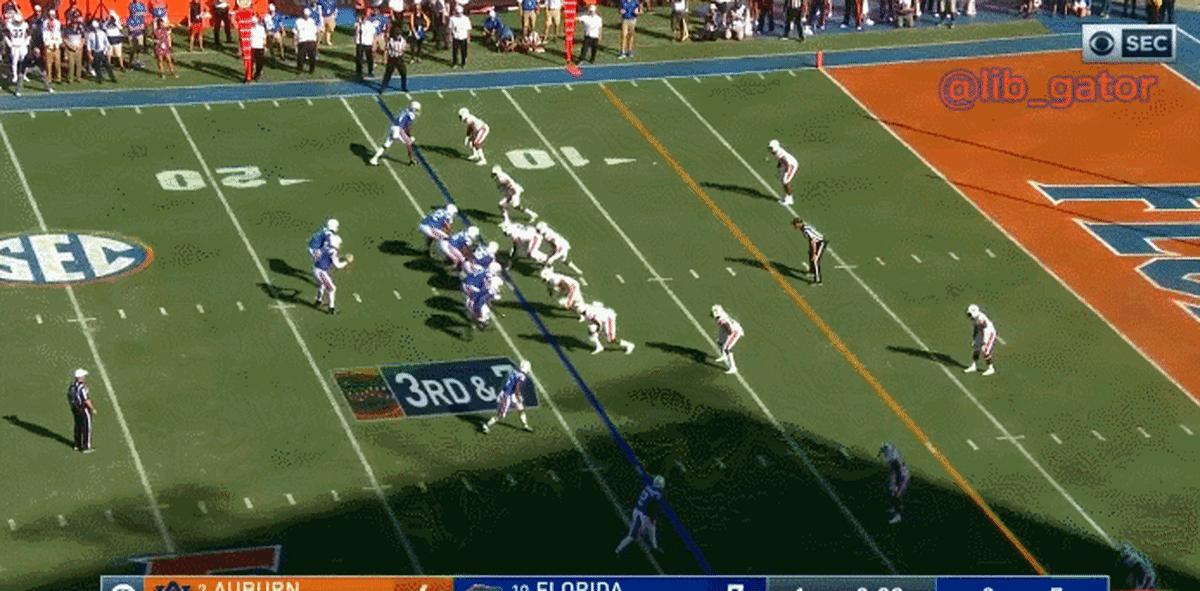
Trask's seventh sack of the season, and second of three against Auburn, comes at the hand of left tackle Stone Forsythe. Trask gets hit in 2.55 seconds, as Forsythe gets taken to school on a dip-and-rip move that ends in a strip sack.
While the previous two examples have painted the offensive line in a slightly more positive light, you can chalk this sack up on Forsythe and Forsythe alone. Delance got beat too on the opposite side, but with guard Brett Heggie controlling the three-technique to the inside, there was slight room for Trask to slide out to the right had Forsythe not been whipped.
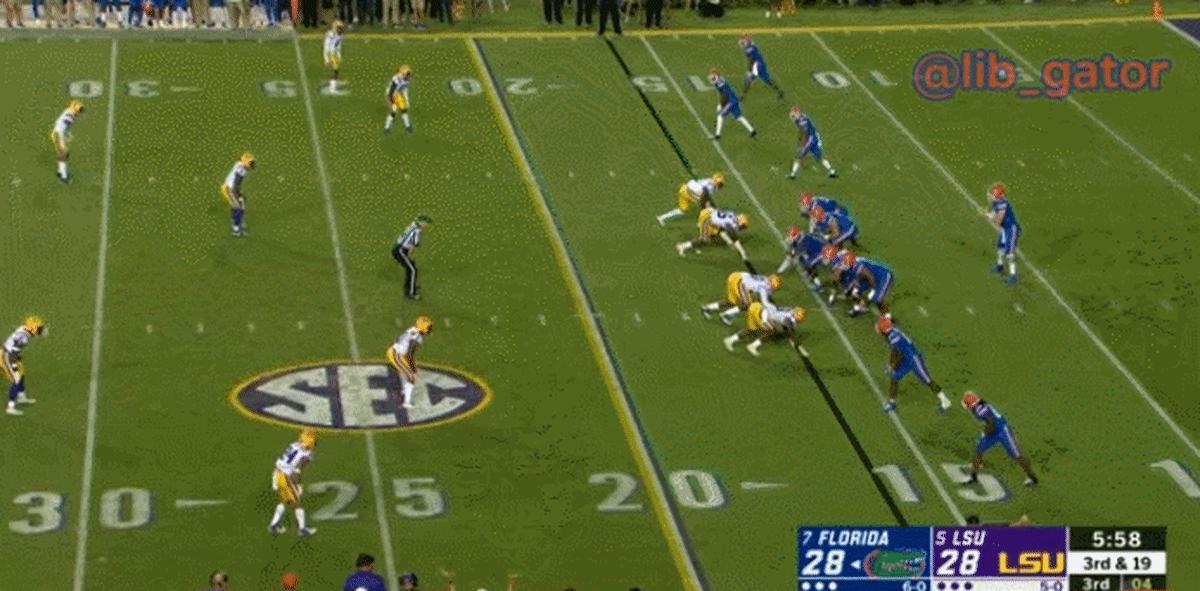
You can't take sacks on 3rd and 19. That's just a fact that needs to be understood before the play is even broken down.
This is only a four-man rush with stunting edge rushers on both sides, determined to shoot middle gaps as the interior linemen work their way outside. The game is tied at 28, with just under six minutes left in the third quarter in a hostile environment.
Trask is sacked in 2.76 seconds, right about average time but with Freddie Swain at the inside slot receiver wide open on a curl route as Trask completes his three-step drop. While it's understood that Florida has some ground to cover to get the first down, Trask needs to get this ball out to the slot receiver.
The outside receiver also opens up on a hook, but this ball should be Swain's to turn and get outside with hopes of creating enough yards after contact with two blockers to his right. It's the only viable option, considering Trask isn't mobile enough to roll back and outside of this pocket at the frame-freeze.
You just can't take sacks on 3rd and 19. Especially given the context here.
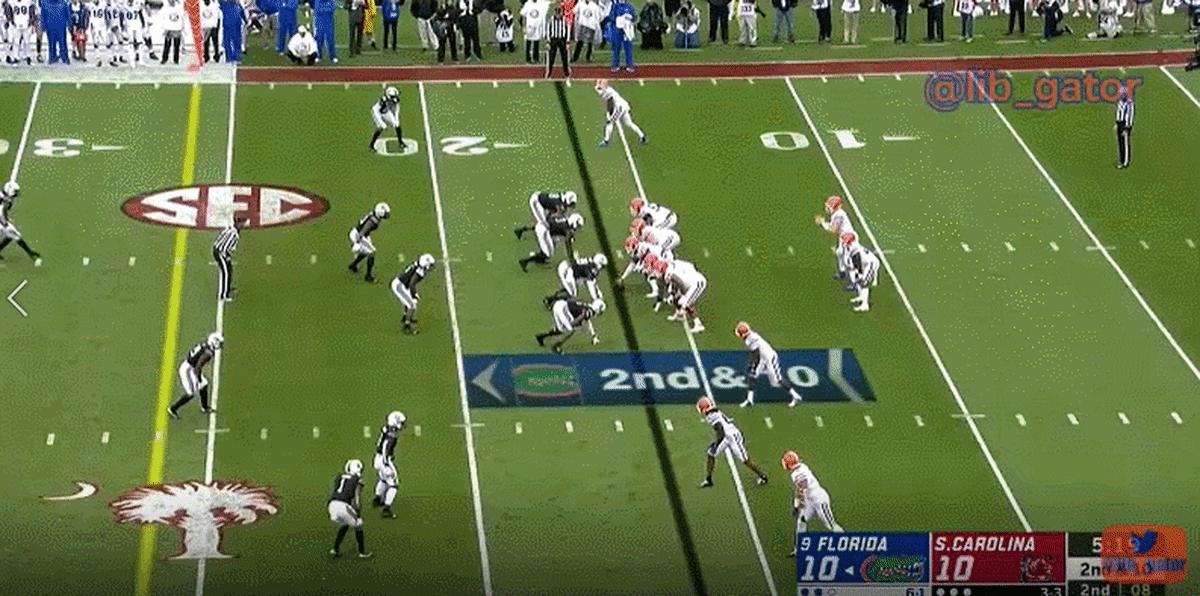
Like the RPO against Auburn, the running back needs the ball here. At the give/pull point with his eyes downfield, all Trask can see are the backs of his receivers, while running back Dameon Pierce only sees daylight ahead of him on 2nd and 10.
Don't be afraid to take what defenses give you. Florida was in no rush on this drive to mount a comeback or score pivotal points - they were set to get the ball back to start the second half anyway. Trask probably wanted to hit tight end Lucas Krull on the deep slant here, but he wasn't digging into the route nearly in time for that pull to be the right decision. Instead, Trask gets hit 3.05 seconds into the play.
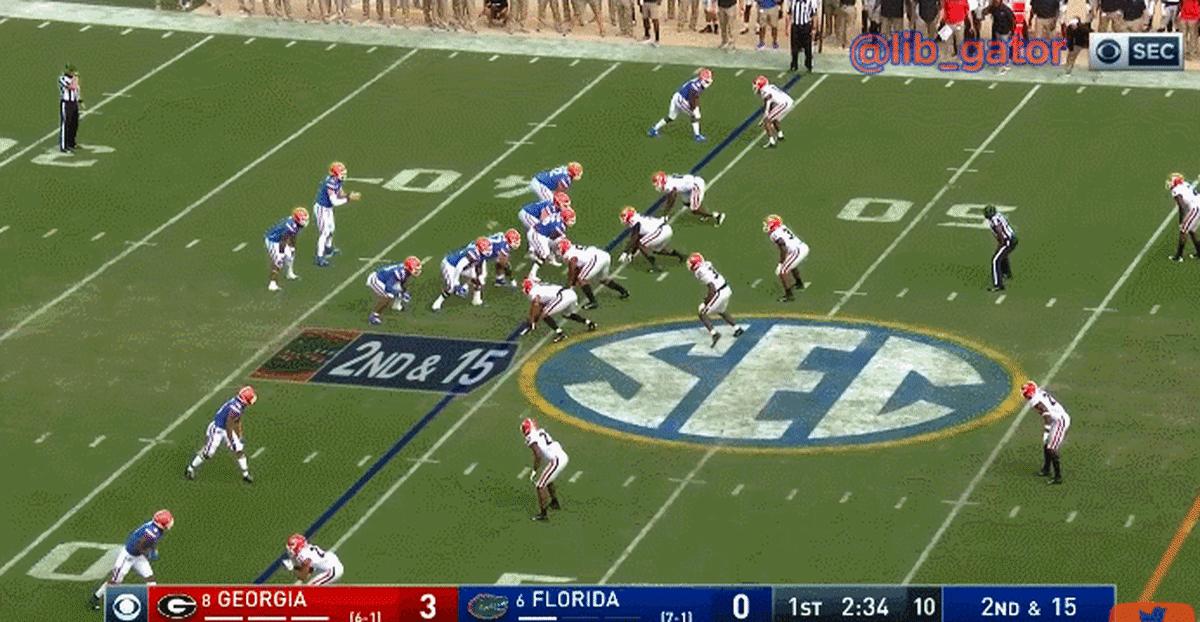
This sack comes from communication issues between Forsythe and Heggie, which led to an initial pressure 1.99 seconds into the play. Trask went down at 2.75, but this play was over before it could start.
Forsythe fails to make solid initial contact with the edge rusher moving inside as he prepares for a stunt - smart thinking on his part, but in no way does that help Heggie battle the stunt. While the interior defender gets into Heggie's pads, the edge rusher slides right by and Forsythe sits waiting for the stunt. Even an early, forceful push to the edge rusher's shoulder pads from Forsythe would have been beneficial to help Heggie here.
There was another sack after this one against Georgia, the one where Trask drops back 19 yards before going down. Trask admitted to that sack being his doing on Monday when he spoke to the media, stating "Obviously I have to get rid of the ball. I take 100% responsibility" - that play doesn't need to be broken down.
All in all, it's clear that blame can go multiple ways when discussing Florida's pass protection this year. The raw stats would lead one to assume this all falls on the offensive line, and on some sacks, blame certainly deserves to go the line's way.
But in reality, the blocking unit is giving Trask a good bit more than average time to get the ball out - via throw or handoff - for a quarterback. And there are plenty of cases where he hasn't taken advantage of it.
